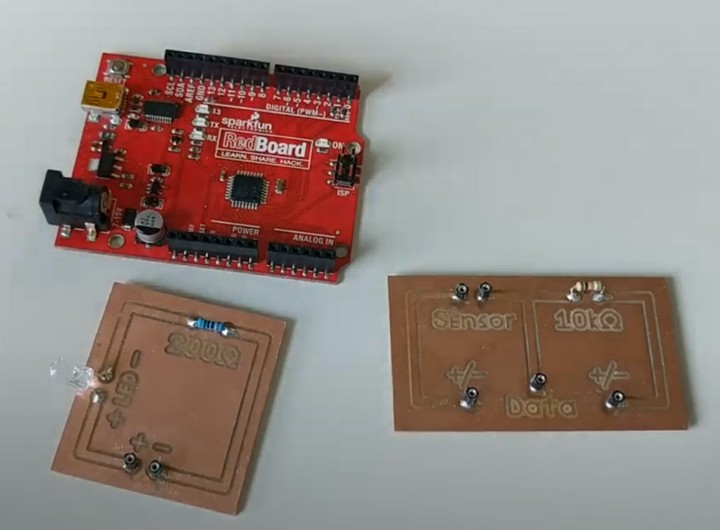Spectrum of Modularity
 Arduino with LED Circuit Module and Sensor Circuit Module
Arduino with LED Circuit Module and Sensor Circuit Module
Overview
This project examines what aspects of the hardware for physical computing can be designed in ways to create glass-box (instead of black-box) scaffolding that fades as the learner gains expertise. The project began with examining the electrical components that can be connected to a microcontroller to lay the foundation of how we could explore the scaffolding throughout the hardware tools.
Motivation
Circuit components for physical computing come in a variety of different forms. They can be highly plug-and-play, like in the LEGO MINDSTORMS Robotics kit, or they can come as individual components leaving the user to figure out how they might create a circuit. Unfortunately, there are not many tools that fit in between these two extremes, or tools that are designed to facilitate learning through scaffolding that can fade. This project was designed to try and understand what tools with that capability might look like. We examined the tools based on their transparency (what the learner can see), and affordances for interaction (how the learner manipulates components within the tools).
Design
The first prototypes for the spectrum of modularity were designed using circuit boards and off-the-shelf components. We explored, six levels of modularity that could exist in the tools. Below is an outline of the various levels.
LEVEL 1: Plug-and-Play Circuits w/ Static Electronic Components

LEVEL 2: Plug-and-Play Circuits w/ Static and Variable Electronic Components<


LEVEL 3: Plug-and-Play Circuits w/ Variable Electronic Components

LEVEL 4: Static Single Electronic Component Modules

LEVEL 5: Variable Single Electronic Component Modules

LEVEL 6: Open Circuit Modules


You can read more about the levels and the rationale behind the spectrum in the publication below. The idea of this work was to draw attention to the design choices in these tools that could facilitate learning. This is not necessarily the only or best way to conceptualize the spectrum, but one attempt. While we used circuit boards for these protoypes, the same concepts can be explored experimenting with the materiality of the boards and components.
Research
Currently we are conducting a lab study comparing students using the standard breadboard, BitBlox, and a set of circuit modules as they learn about the Arduino for the first time. Some of the students will be completing a think-aloud protocol as they learn about the Arduino for the first time. The research questions in this work explore the cognitive and work processes of novices, and how they are affected by the tool design.
- RQ1. How can the tools be designed to facilitate students in learning about physical computing?
- RQ2. What are the common misconceptions and errors that students make when learning about the Arduino?
- RQ3. How do the hardware tools students use affect their self-efficacy with physical computing?
While this study will provide insight into what the students are thinking, it does not give us an understanding of how the tools will affect the socio-technical learning environment in a real-world context. Future studies will be designed to understand research questions in that situation, enabling us to build a deeper understanding of the tools.
Publications
DesPortes, K., & DiSalvo, B. (2017). Where are the Glass-Boxes? Examining the Spectrum of Modularity in Physical Computing Hardware Tools. Proceedings of the the 16th International Conference on Interaction Design and Children (pp. 292-297). ACM. [Download]
DesPortes, K., & DiSalvo, B. (2019). Trials and Tribulations of Novices Working with the Arduino. In Proceedings of the 2019 ACM Conference on International Computing Education Research, pp. 219-227. 2019. [Download]
Research Team
- Dr. Kayla DesPortes - Assistant Professor of HCI and the Learning Sciences @ NYU
- Dr. Betsy DiSalvo - Associate Professor @ Georgia Tech
**Note: The initial work was done as part of my PhD work @ Georgia Tech under the advisement of Betsy and has carried into my work at NYU. **